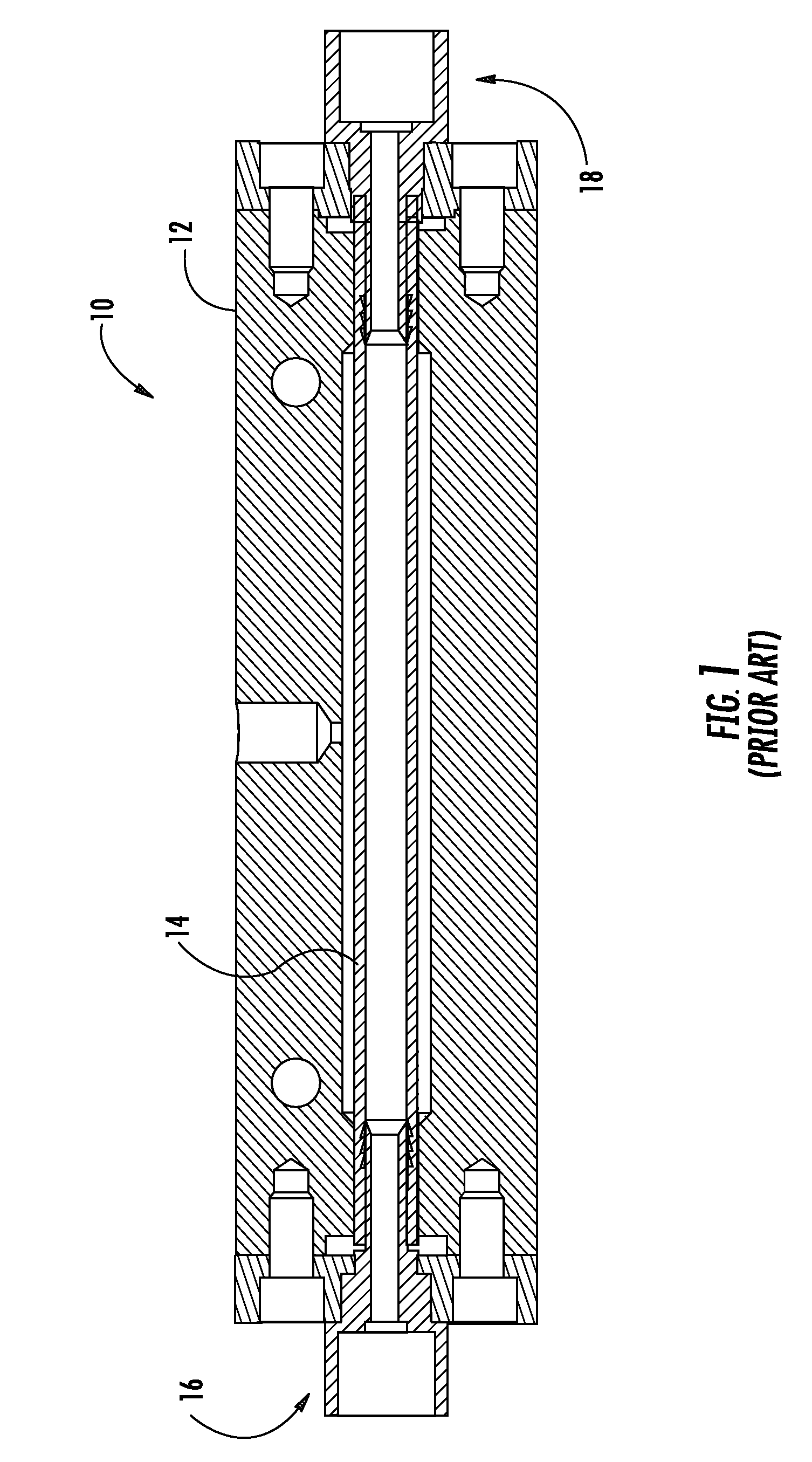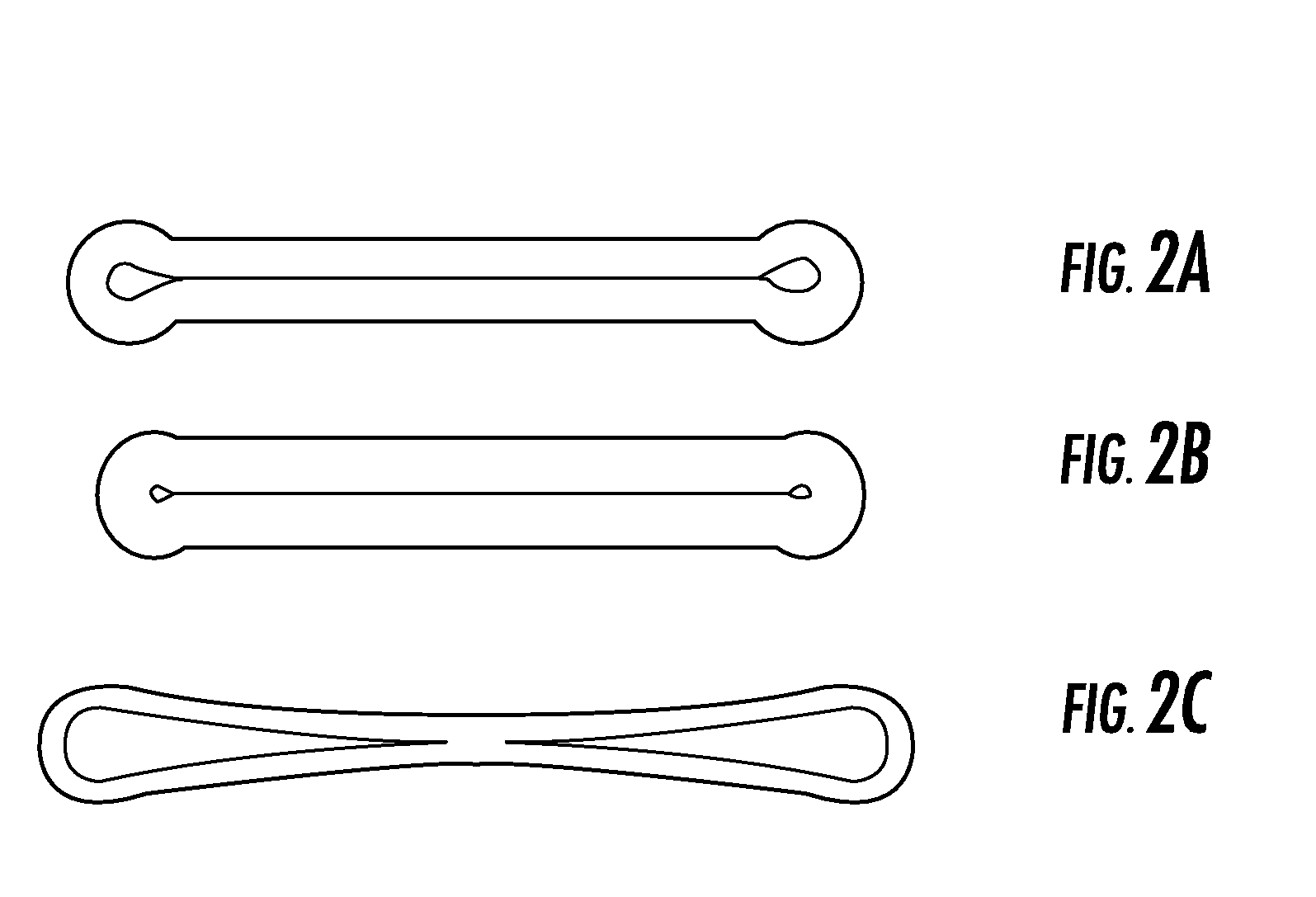Flow control systems and control valves therefor
a flow control and control system technology, applied in the field of fluid systems, can solve the problems of inability to achieve precise flow control, high shear, and high friction, and achieve the effects of enhancing control stability, minimizing pinch pressure, and reducing friction
- Summary
- Abstract
- Description
- Claims
- Application Information
AI Technical Summary
Benefits of technology
Problems solved by technology
Method used
Image
Examples
Embodiment Construction
[0039] Referring to the drawings wherein identical reference numerals denote the same elements throughout the various views, FIG. 4 illustrates an exemplary control valve 100 constructed in accordance with an aspect of the present invention. The control valve 100 is similar to the prior art control valve 10 and has a rigid, generally cylindrical housing 112 with an inlet 116 and an outlet 118. An elastomeric tube 114 passing through the housing 112 has a flow passage 120 extending therethrough. The outer surface 122 of the tube 114 and the interior of the housing 112 cooperatively define a pressure chamber 124. A pressure port 126 in the sidewall of the housing 112 is in fluid communication with the pressure chamber 124.
[0040] A counterbore 128 is formed at each end of the housing 112. A cylindrical collar 130 is received in each counterbore 128 and surrounds the tube 114. The collars 130 are sealed to the housing 112 with O-rings 132 or other suitable seals. A fitting 134 with a b...
PUM
 Login to View More
Login to View More Abstract
Description
Claims
Application Information
 Login to View More
Login to View More - R&D
- Intellectual Property
- Life Sciences
- Materials
- Tech Scout
- Unparalleled Data Quality
- Higher Quality Content
- 60% Fewer Hallucinations
Browse by: Latest US Patents, China's latest patents, Technical Efficacy Thesaurus, Application Domain, Technology Topic, Popular Technical Reports.
© 2025 PatSnap. All rights reserved.Legal|Privacy policy|Modern Slavery Act Transparency Statement|Sitemap|About US| Contact US: help@patsnap.com



